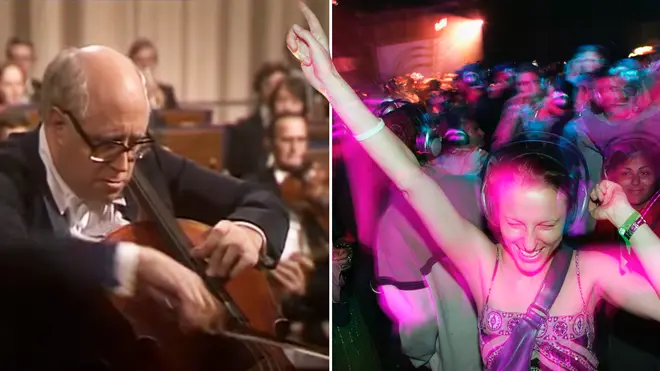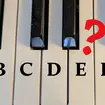Six of the biggest dance floor ‘drops’ in classical music history
6 July 2021, 17:29

The musical and theoretical anatomy of the dance floor beat drop, and some thumping examples from the history of classical music...
Electronic Dance Music coined a musical device called a ‘drop’. A drop (or beat drop as it can be called) most commonly involves an intense build-up, a break, and a sudden change of rhythm, texture or bass line.
It’s one of the most popular tools in dance music, which you will hear in pop songs, Electronic Dance Music, and sets from the biggest DJs of our time. Here’s a typical example from star DJ, Calvin Harris:
Read more: Jazz pianist finds ingenious way to correct audience clapping on the wrong beat

Calvin Harris at Capital’s Summertime Ball 2019
Millions jump around and dance to the infectious nature of these drops. In Electronic Dance Music circles, people say they have been around since the 1970s, but we can do even better than that.
Let’s have a crack at the music theory behind it all. And once we know what’s going on musically, we can explore those epic drops that have actually been happening in classical music for centuries.
The music theory behind a beat drop
Like in all music, every drop is unique, so this is a look at the most common musical characteristics. Typically a drop will begin with that build-up. Over a repeating beat or ostinato, the DJ will often start by using high pass filter sweep, which means that the low frequencies are made quieter over time, leading to a sense of “groundlessness”.
Meanwhile, tension is being created melodically and rhythmically. A lot of drops have figurations of quarter notes which then turn into 8th notes, and then 16th notes, and so on. These figurations often ascend, to bring tension and anticipation to the build-up.
Electronic Dance Music will also use harmonic change and dissonance to build tension, with bass notes from V, IV or II of the chord, or bending and distorting melody notes.
Next comes the break. This is a complete rest or break in the music for a beat or sometimes more.
Then is the moment of drop – where the new section of music enters. Those low frequencies return, the sound is loud and full, and everyone is dancing.
Reducing a drop to its musical fundamentals, you can see how it’s one of the oldest techniques of musical expression, that of tension and release: building up tension melodically, harmonically, and rhythmically, and then a sudden release. Ultimately, people love drops for the same reason they love perfect cadences as the harmonic tension of the V7 chord is released in the I chord.
(we are indebted to Redditor frajen for lots of this insight)
The best drops in classical music
Having established the musical anatomy of a drop, let’s look at those times when it happens in classical music. And in the ever-fascinating way music is all related, lots of them could be note-for-note worthy of a dance floor drop. See if you agree.
-
Dropping the beat in Dvořák’s Cello Concerto
In this section from the great concerto’s opening movement, the melody is passed to oboe, flutes and high strings (like that high pass filter sweep). Those cello figurations grow with huge intensity (in this case from supreme cello DJ of his day, Mstislav Rostropovich), then pause at the height of tension, before a new section brings in the full, glorious orchestra.
Ladies and gentleman, this shall be known as a Dvořák drop.

Dvorák - Concerto in B minor Op. 104 / Mstislav Rostropovich
-
Slamming Simple Symphony from Britten
We reckon Britten’s pizzicato minuet and trio for his Simple Symphony for string orchestra has a drop. Leading into the trio the musical texture gets tense before a big break. Then, it launches into a new section with a key change, and some thundering cello and bass plucking worthy of any sonorous dance floor beat.
You’ll see what we mean...

Benjamin Britten: Simple Symphony, for string orchestra, op.4 [with score]
-
Rachmaninov Piano Concerto No. 2
This Russian masterpiece has it all, including a drop, we can now establish.
Listen to the way the piano and orchestra build, before powering into an incredible Rachmaninov recapitulation with all the characteristics of our dance floor faves.

Rachmaninov Piano Concerto No 2, Evgeny Kissin HD
-
A sizzling Shostakovich drop
The ‘Allegro molto’ from Shostakovich’s String Quartet No. 8 is one of the most extraordinary and intense moments in chamber music. Listen to how these figurations grow with the tension, before a drop after the one-minute mark, which cues the cello to start pounding like a bass drum.

Emerson String Quartet: Shostakovich Quartet No. 8 in C minor, Op. 110
-
Fate knocking at the dance floor: Beethoven's Symphony No. 5
An extraordinary moment occurs just before the final movement of Beethoven’s famous symphony, and it’s 100% a drop. The third movement is a dark, punchy, probing affair that ends just in pianissimo plucking strings in a minor key. From there, Beethoven slowly builds through a mammoth crescendo, adding instruments and shimmering textures. There’s a huge dominant chord, before we arrive in C major with trombones blaring.

Beethoven, Symphony 5, 3rd & 4th movements
-
Bach, and the original drop?
It’s beautiful, iconic and one of the most timeless musical journeys. And we reckon the famous climax to the Prelude of JS Bach’s Cello Suite No. 1 is a drop. And a massive one.
Think about it: you get that slow build, over a pedal note, with the figurations pressing higher and growing in speed – before Bach rises to take you to a break of infinite tensions, and then four wonderful bars of full voiced resolution.
DJ JSB, the OG.

Yo-Yo Ma plays Bach's Cello Suite No. 1, Prelude


























